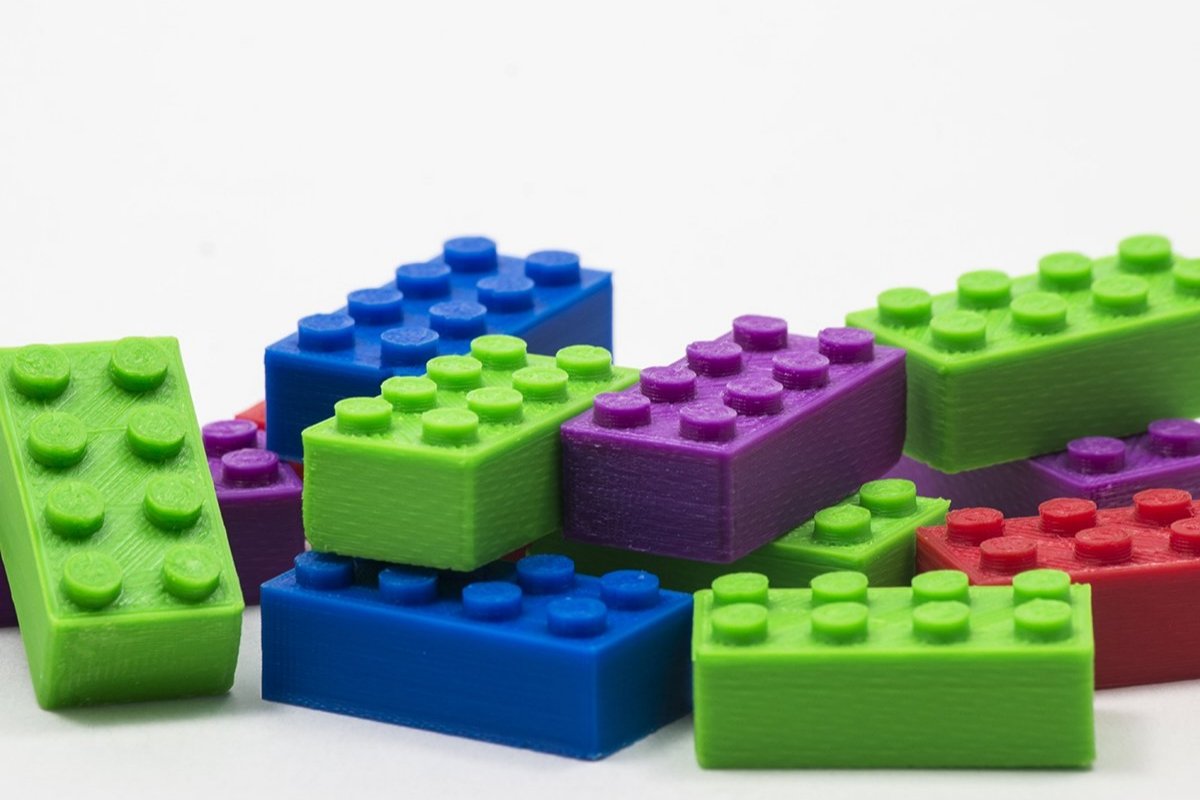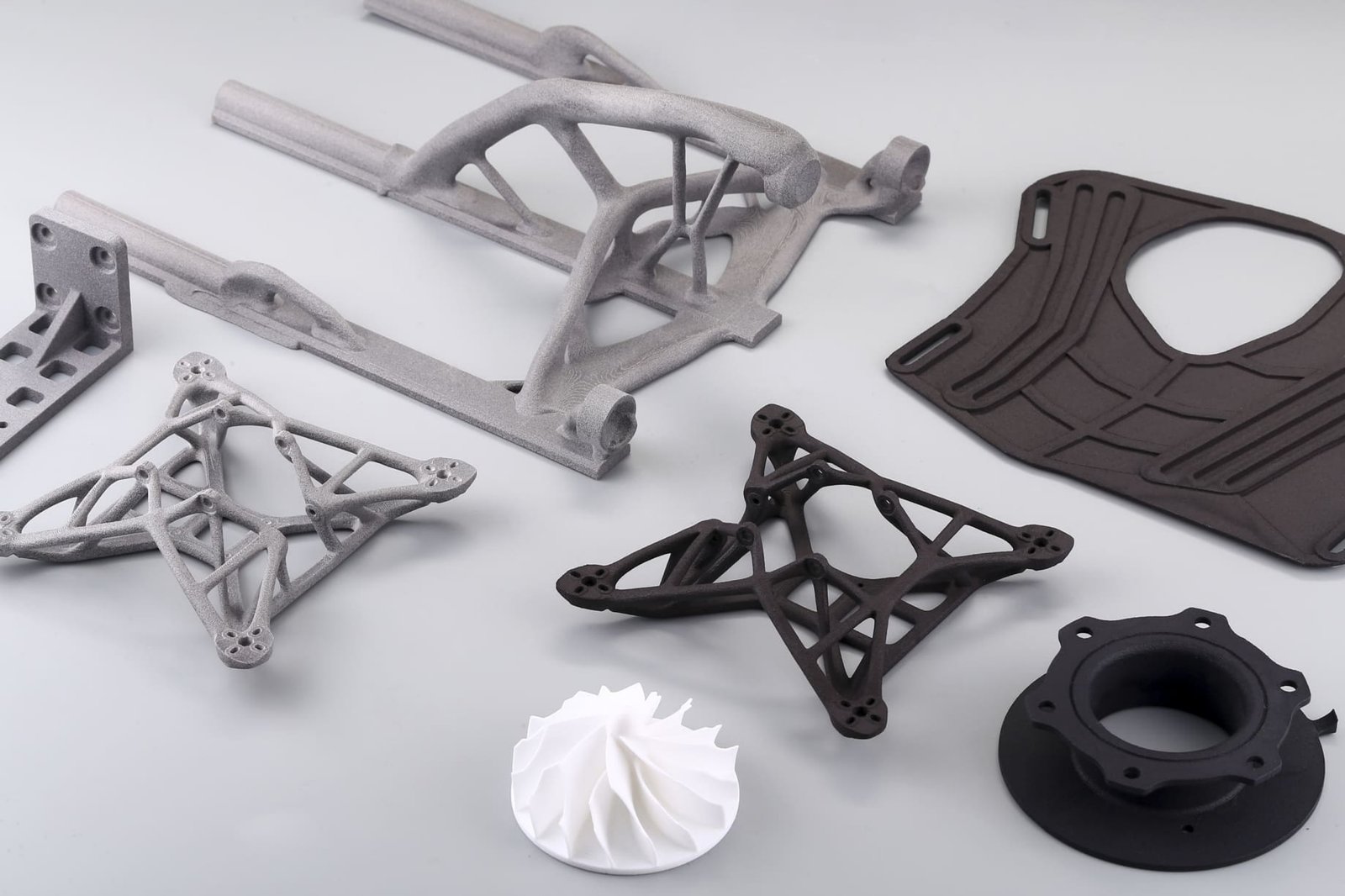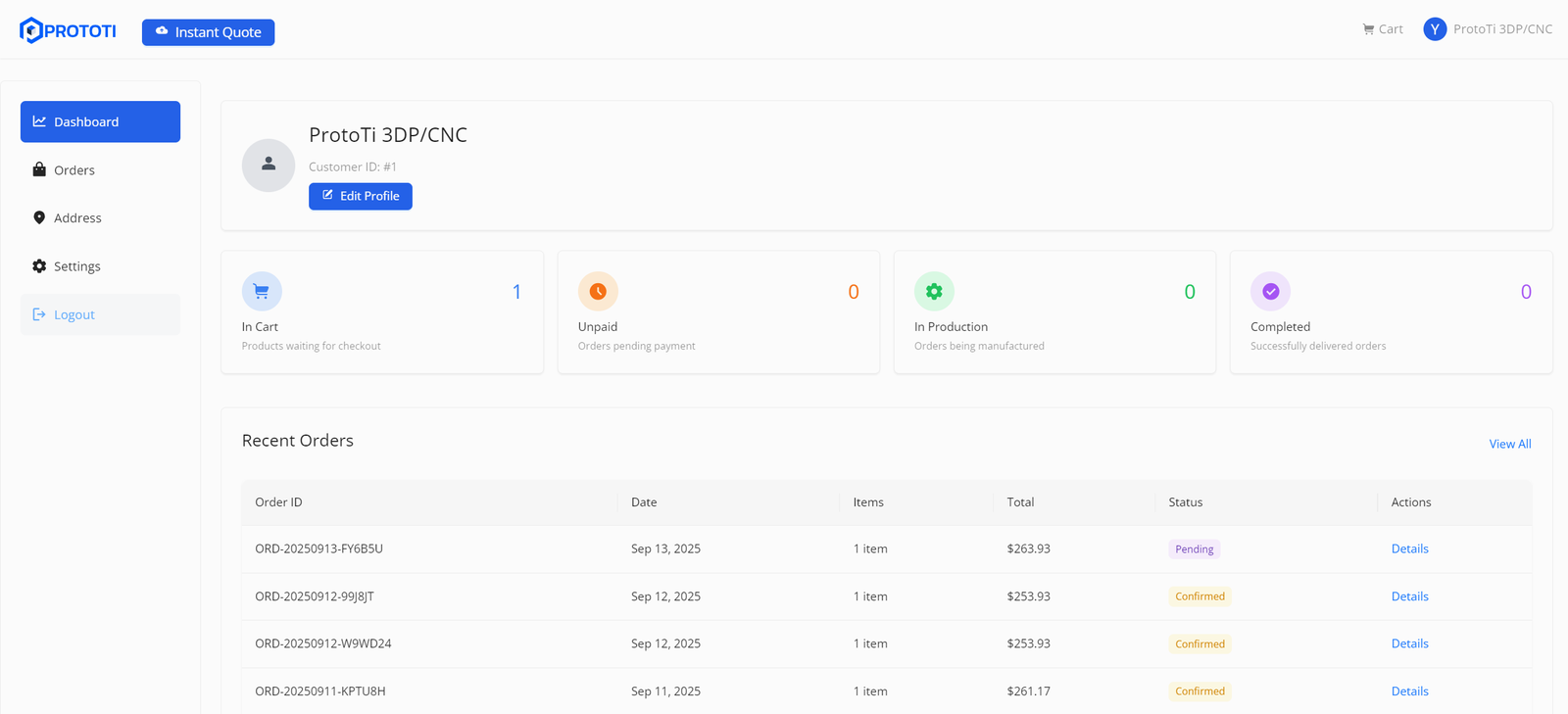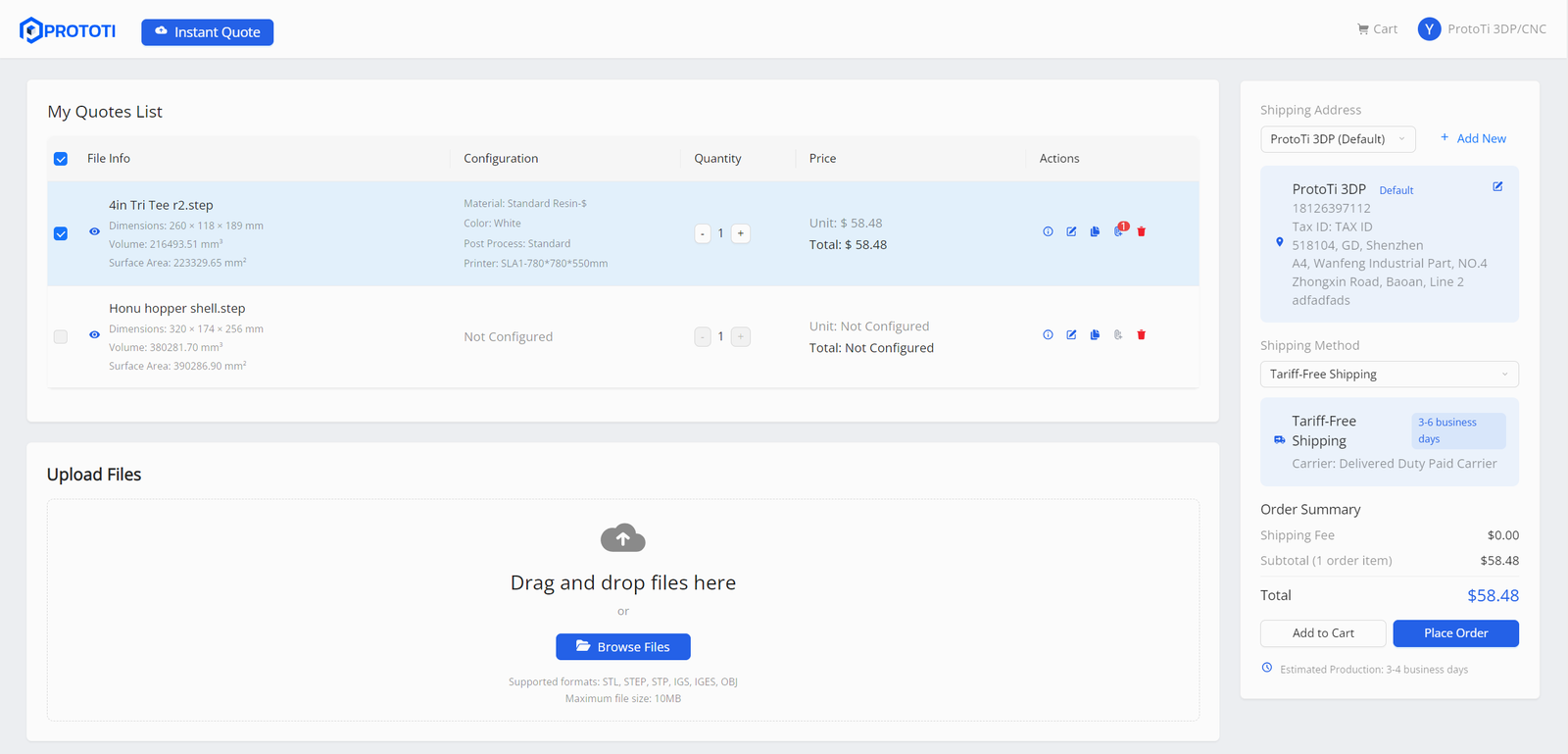FDM 3D Printing Service
FDM 3D Printing empowers your projects with unmatched affordability, fast turnaround, and exceptional material versatility. From concept models and functional prototypes to low-volume production runs, we deliver durable parts in a wide range of thermoplastics and colors. With the ability to create large, strong components at scale, FDM is the go-to solution for industries seeking reliable performance, design flexibility, and cost efficiency in every stage of product development.
- One-stop 3D printing
- 30+ materials on board
- Printing parts as fast as 2-days
What is FDM 3D Printing?
FDM (Fused Deposition Modeling) is one of the most common and accessible 3D printing technologies. It works by melting a thermoplastic filament and extruding it layer by layer to build up a 3D object. FDM is widely used for prototyping, functional parts, and educational purposes due to its affordability and ease of use. Materials commonly used in FDM include PLA, ABS, PETG, and TPU. While FDM parts may have lower resolution and surface finish compared to other methods, it offers good mechanical properties and is ideal for a wide range of applications.

ProtoTi FDM 3D Printing Capabilities
Name
Min. Wall Thickness
Max. Build Size
Tolerance
Support Structures
Lead time
Industrial FDM
0.8 mm
250 x 250 x 250 mm
±0.2 mm
Yes
from 2 business days
FDM 3D Printing Parts Using Various Materials
.jpg)
Polypropylene(PP)
Polypropylene (PP) is a versatile thermoplastic polymer known for its excellent chemical resistance, flexibility, and fatigue resistance. In 3D printing, PP offers lightweight yet durable parts ideal for functional prototypes and end-use applications. Its low density and resistance to moisture and chemicals make it suitable for automotive, packaging, and consumer goods. However, PP’s semi-crystalline nature can lead to warping during printing, requiring optimized settings and sometimes specialized printers for best results.
Key Features:
High chemical and moisture resistance
Good flexibility and fatigue resistance
Lightweight and durable
Challenging to print due to warping tendencies
Suitable for functional parts, hinges, and living hinges

Polylactic Acid (PLA)
Polylactic Acid (PLA) is a biodegradable thermoplastic derived from renewable resources like corn starch or sugarcane. It is one of the most popular 3D printing materials due to its ease of printing, low warping, and environmentally friendly nature. PLA produces parts with good surface finish and rigidity, making it ideal for prototypes, educational models, and decorative items. However, it has lower heat resistance and impact strength compared to other plastics, limiting its use in high-temperature or mechanically demanding applications.
Key Features:
Biodegradable and environmentally friendly
Easy to print with low warping
Good surface finish and dimensional accuracy
Relatively low heat resistance (~60°C)
Suitable for prototypes, models, and decorative parts

Acrylonitrile Butadiene Styrene(ABS)
ABS is a widely used thermoplastic known for its toughness, impact resistance, and heat resistance. It is favored for producing durable and functional parts such as automotive components, housings, and mechanical prototypes. ABS requires a heated bed and controlled printing environment to minimize warping and ensure good layer adhesion. It can be post-processed easily through sanding, painting, or acetone vapor smoothing to improve surface finish. Due to its stronger mechanical properties compared to PLA, ABS is suitable for applications requiring higher durability and temperature resistance.
Key Features:
High impact strength and toughness
Good heat resistance (~100°C)
Requires heated bed and enclosed print chamber
Can be post-processed for smooth surface finish
Ideal for functional prototypes, mechanical parts, and enclosures

Polyethylene Terephthalate Glycol(PETG)
PETG is a popular thermoplastic that combines the ease of printing found in PLA with the strength and durability of ABS. It offers excellent chemical resistance, good flexibility, and impact strength, making it ideal for functional parts that require toughness and durability. PETG prints with low warping and produces parts with a glossy, smooth surface finish. It is also food-safe when using certified materials, expanding its use into packaging and medical applications. PETG requires moderate print temperatures and a heated bed for optimal results.
Key Features:
Good strength and flexibility
Excellent chemical and moisture resistance
Easy to print with low warping
Smooth, glossy surface finish
Suitable for functional prototypes, mechanical parts, and containers

Thermoplastic Polyurethane(TPU)
TPU is a flexible, rubber-like thermoplastic known for its excellent elasticity, abrasion resistance, and durability. It is widely used for printing parts that require flexibility, impact absorption, and wear resistance, such as phone cases, seals, gaskets, and wearable devices. TPU can stretch significantly without breaking and returns to its original shape, making it ideal for dynamic and soft components. Printing TPU requires careful control of speed and extrusion settings due to its flexible nature but yields highly functional and durable parts.
Key Features:
High flexibility and elasticity
Excellent abrasion and impact resistance
Durable and wear-resistant
Suitable for flexible parts like seals, gaskets, and protective covers
Requires slower print speeds and precise extrusion control
FDM 3D Printing Material Specifications
Material Name
Description
Max. Build Size
Elongation at Break (%)
Flexural Strength (MPa)
HDT@0.46 MPa (°C)
Polypropylene(PP)
Black, White, Orange, Red, Gray,Etc.
250 x 250 x 250 mm
100-300%
30-50 MPa
80-100℃
Polylactic Acid (PLA)
Black, White, Orange, Red, Gray,Etc.
250 x 250 x 250 mm
4-10%
70-100 MPa
55-65℃
Acrylonitrile Butadiene Styrene(ABS)
Black, White, Orange, Red, Gray,Etc.
250 x 250 x 250 mm
10-30%
50-75 MPa
90-105℃
Polyethylene Terephthalate Glycol(PETG)
Black, White, Orange, Red, Gray,Etc.
250 x 250 x 250 mm
15-25%
60-80 MPa
70-80℃
Thermoplastic Polyurethane(TPU)
Black, White, Orange, Red, Gray,Etc.
250 x 250 x 250 mm
300-600%
25-40 MPa
50-70℃
FDM 3D Printing PROS & CONS
Pros
Low Cost:
FDM printers and materials are relatively inexpensive, making them ideal for hobbyists and small businesses.
Wide Material Variety:
Supports a range of thermoplastics such as PLA, ABS, PETG, TPU, Nylon, etc., catering to diverse functional needs.
Ease of Use:
FDM machines are user-friendly, with low maintenance costs, suitable for beginners and rapid prototyping.
Large Build Volume:
FDM printers come in various sizes, including industrial-scale models capable of printing large parts.
Good Mechanical Properties:
Printed parts are strong and suitable for functional testing and some end-use applications.
Cons
Moderate Surface Quality:
Layer lines are visible, and details are less refined compared to SLA or SLS, often requiring post-processing.
Slower Printing Speed:
Especially for high-resolution or large parts, printing can take a long time.
Limited Precision:
Accuracy is limited by nozzle size and material flow, resulting in lower detail resolution.
Warping and Deformation Risk:
Thermoplastic shrinkage during cooling can cause warping and dimensional instability.
Support Removal Challenges:
Complex models need support structures that can be difficult to remove cleanly, potentially damaging the part’s surface.
FDM 3D Printing FAQs
1. What is FDM 3D printing?
Fused Deposition Modeling (FDM) is a 3D printing technology that builds parts layer-by-layer by melting and extruding thermoplastic filament through a heated nozzle.
2. What materials can be used in FDM printing?
Common materials include PLA, ABS, PETG, TPU, Nylon, and Polypropylene, each with different properties suited for various applications.
3. What are typical applications of FDM printing?
FDM is widely used for prototyping, functional parts, jigs and fixtures, educational models, and low-volume production.
4. What are the advantages of FDM?
It is cost-effective, easy to use, supports a wide range of materials, and can print relatively large parts.
5. What are the limitations of FDM?
Surface finish can be rough with visible layer lines, printing speed is slower compared to some other methods, and precision is limited.
6. How to improve print quality?
Optimize print settings (temperature, speed, layer height), use high-quality filament, and consider post-processing techniques like sanding or acetone smoothing.
7. Can FDM print flexible parts?
Yes, flexible materials like TPU are compatible with FDM, allowing for the creation of elastic and impact-resistant parts.
8. What are common issues in FDM printing?
Warping, layer adhesion problems, stringing, and clogging are typical, but can usually be resolved by adjusting settings and maintenance.
9. Is support material needed?
Complex geometries often require support structures which need to be removed after printing.
10. How large can FDM prints be?
Print size depends on the printer; desktop models usually print up to 300x300x400 mm, while industrial machines can be much larger.
Other 3D Printing Capabilities from ProtoTi

SLA
Stereolithography
- Visual part prototyping. High resolution. Low cost.
- Dimensional accuracy of ±0.2% with a lower limit of ±0.2mm.
- Lead times from 2 business days

SLS
Selective Laser Sintering
- Functional prototyping. Low-run production.
- Dimensional accuracy of ±0.3% with a lower limit of ±0.3mm.
- Lead times from 3 business days

MJF
Multi Jet Fusion
- Functional prototyping. Low-run production.
- Dimensional accuracy of ±0.3% with a lower limit of ±0.3mm.
- Lead times from 3 business days

SLM
Selective Laser Melting
- Metal parts rapid prototyping. Production grade.
- Dimensional accuracy of ±0.2% with a lower limit of ±0.2mm.
- Lead times from 4 business days

FDM
Fused Deposition Modeling
- Plastic parts rapid prototyping. Low cost.
- Dimensional accuracy of ±0.2% with a lower limit of ±0.2mm.
- Lead times from 4 business days

DLP
Digital Light Processing
- Resin parts rapid prototyping. High details.
- Dimensional accuracy of ±0.2% with a lower limit of ±0.2mm.
- Lead times from 4 business days


